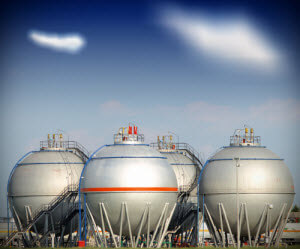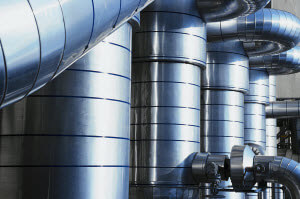Natural Gas Pros and Cons: The Future of Natural Gas as an Energy Source
Natural gas has been called both a solution and the cause of the world’s energy and environmental problems. Some consider it to be an effective and reliable source of energy while others see it as an environmental hazard. So which side is right?
The truth is, natural gas has both pros and cons that will affect its future as an energy source. A few of them listed are below.
Drawbacks of Natural Gas
 One of the biggest concerns of using natural gas as an energy source is its sustainability. Natural gas is a non-sustainable and non-renewable form of energy. This means the global supply will run out at some point. Plus, depending on how high the demand is, we could run out of natural gas sooner than anticipated.
One of the biggest concerns of using natural gas as an energy source is its sustainability. Natural gas is a non-sustainable and non-renewable form of energy. This means the global supply will run out at some point. Plus, depending on how high the demand is, we could run out of natural gas sooner than anticipated.
On top of that, natural gases are known to emit greenhouse gases. When burned, natural gas releases carbon compounds such as carbon dioxide and carbon monoxide, two compounds that cause global warming and climate change, into the atmosphere. Natural gas also contains a high percentage of methane, another greenhouse gas.
The costs of working with natural gases can also be expensive. Plants and homes need long pipe systems as well as specialized tanks and plumbing systems when working with or transporting natural gas. These systems may lead to excessive spending and decreased revenue for many.
Above all, natural gas can be extremely dangerous. Natural gas is colorless, odorless, and highly flammable, so gas leaks tend to go unnoticed, which leads to overexposure and illness. Gas leaks also cause fires and explosions in both plants and homes using natural gas.
Benefits of Natural Gas
 While the disadvantages of natural gas are substantial, natural gas does offer a number of benefits. For example, while natural gas may emit greenhouse gases, it’s the cleanest burning fossil fuel available.
While the disadvantages of natural gas are substantial, natural gas does offer a number of benefits. For example, while natural gas may emit greenhouse gases, it’s the cleanest burning fossil fuel available.
If fact, natural gas emits up to 50% less carbon dioxide than coal and 20% to 30% less than oil, according to the International Gas Union.
Natural gas is also a flexible source of energy, which means it can be used in many applications. It can power vehicles, produce electricity, heat homes, and much more. Plus natural gas can be cheaper to use compared to other resources.
Most importantly, natural gas provides economic benefits. Increased demands of natural gas have led to the creation of more plants across the country. As a result, the oil and natural gas industry has provided more job opportunities.
Future of Natural Gas as an Energy Source
Based on the pros of cons listed above as well as changing industry trends, the future of natural gas as an energy source is uncertain. However, according to the US Energy Information Administration’s (EIA) Short-Term Energy Outlook, the future of natural gas may be bright at first.
The report predicts that natural gas prices will decline throughout the rest of the year and gradually rise in 2017. The report also states that natural gas production and trade as well as consumption will increase within the next year.
The EIA notes that the natural gas inventories have had lower-than-average storage injections, with just 3,401 billion cubic feet available. But despite this low amount, the EIA believes that natural gas inventory will increase to 4,042 billion cubic feet by October 2016.
So despite all of the pros and cons, natural gas is likely to continue being a top energy source for the United States and the rest of the world.
Check out CPV Manufacturing’s blog for more industry news.

